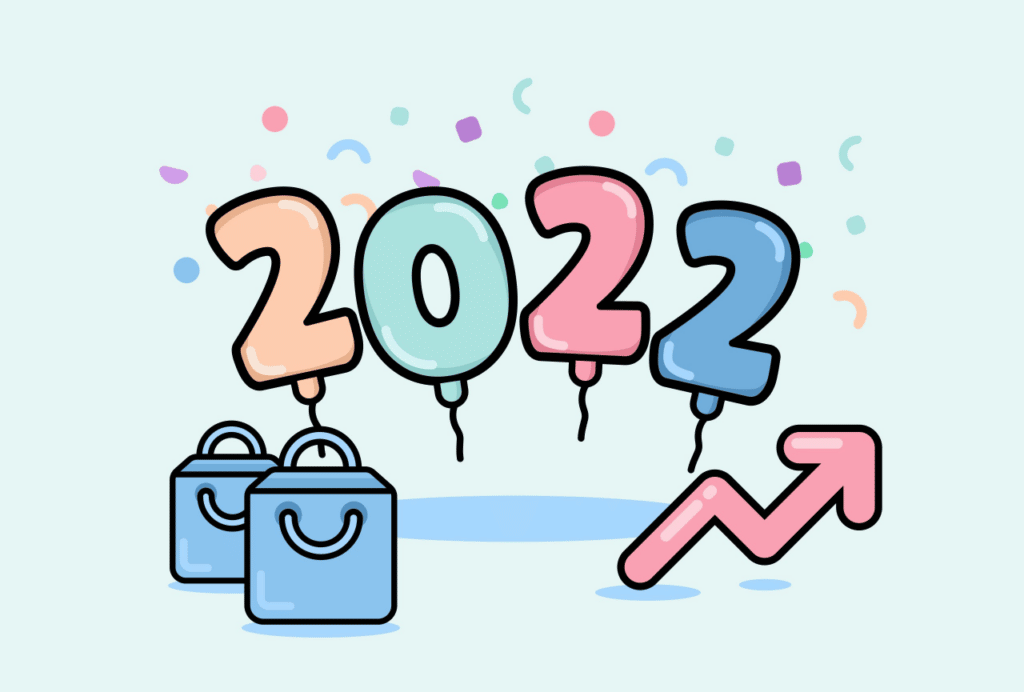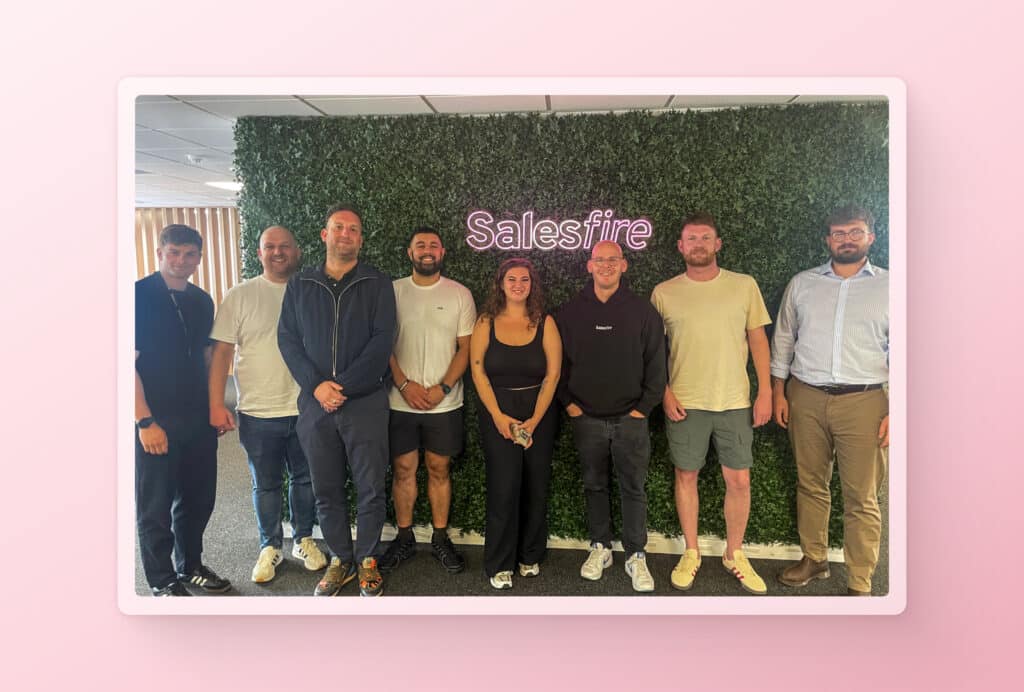The 6 Top eCommerce Trends That Shaped 2022
By Bethany Llewellyn • Last updated: Thursday Apr 25th, 2024

Following a period of uncertainty in the eCommerce space, 2022 was a year of adapting to the new normal.
The introduction of new technologies and changeable consumer behaviour meant retailers needed to be more reactive than ever before.
We’ve analysed some of the key eCommerce trends 2022 was shaped by, to highlight the impact they had on the industry and how they may affect eCommerce businesses in the long term.
6 eCommerce trends that shaped 2022
1. Shifting consumer behaviour
The cost of living crisis and rising energy costs have had a direct impact on consumer behaviour in eCommerce this year. Consumers are more conservative with their spending habits, as there’s greater concern around affording basic necessities. This has had a noticeable effect on online retail.
However, the effect on eCommerce stores and customers comes from more than just rising prices: global supply chain issues have also had a direct impact on revenue growth and customer satisfaction.
Research has uncovered some interesting stats to back this up:
- 79% of eCommerce businesses with superior supply chains report above-average revenue growth1.
- More than 25% of shoppers abandon their cart if same-day shipping isn’t available.2
- Various supply chain disruptions can result in $611 million in wasted mileage.3
As the industry continues to face challenges, consumer behaviour will continue to change. Businesses will need to adapt their strategy to ensure they are meeting customer expectations.
Considerations: Reviewing consumer behaviour in 2022, eCommerce analytics platform Trends reported a 19.64% decrease in visitors YoY on Black Friday 2022.
But even with a decrease in visitors, stats showed a 2.72% uplift in average order values and a 13.37% increase in conversion rate when compared to the year before. This suggests that consumers were holding off until Cyber Week to secure the best discounts and offers to complete their Christmas shopping.
Going forward, online stores can monitor consumer behaviour on key dates to predict performance and implement suitable campaigns to secure future eCommerce sales.
2. Personalised customer journeys
On-site personalisation may not be a new trend but it continues to dominate the eCommerce space.
Personalising the customer journey from the moment a user lands on your site right through to the checkout can be the difference between a one-time purchase and a life-long customer.
What’s more, research shows that 80% of customers were more likely to buy from a brand that offered a personalised customer experience.4
Data like this proves that if you’re not providing a tailored experience, you can lose out on a significant amount of revenue.
When planning personalisation strategies, this could include creating content and messaging that responds to:
- A customer’s previous purchases
- Your users’ browsing behaviour
- How long a visitor has spent on site
- A shopper’s demographic information such as location or device
While personalisation is a year-round trend for eCommerce sites, the time to capitalise on these strategies is on key dates like Black Friday or Christmas when customers are more likely to convert. In such a busy (but stressful) shopping period, offering personalised product recommendations and experiences will improve the customer journey and boost their satisfaction.
Suggestions: Your personalisation strategies don’t need to start and end with your website.
Your email marketing strategy is one of the most effective ways to communicate and re-engage your visitors by using personalised tokens or sending users their abandoned carts.
3. The world of mCommerce
Mobile commerce has been rapidly growing over recent years and 2022 was no different.
Bringing online shopping to your fingertips, this trend dominated the year alongside the rise in in-app shopping.
It’s no surprise with the variety of benefits of mCommerce that come with mobile shopping, including:
- Ease and convenience: Over half of the world’s population owns a smartphone, making it easier to complete a purchase at any time and anywhere.
- Quick checkout: Auto-fill payments, push notifications and one-click checkouts have transformed how users shop.
- In-app shopping: This rise in mobile commerce has led to an increase in in-app shopping. This means users are able to shop for products the way they want to rather than head to a desktop to complete a purchase.
- Social media: The ability to promote and link your video content or products on popular social media platforms like Instagram, TikTok and Facebook allows you to reach a new audience of potential customers.
Providing a seamless shopping experience to mobile users offers the opportunity to open your business’s doors to a whole new range of consumers.
Pro tip: Capitalise on this growing trend and allow users to shop for and discover products the way they want to.
Using tools like Visually Similar Search will replicate the social media buying experience by enabling customers to find exactly what they’re looking for with ease. This will result in more conversions from your tech-savvy customers.

4. Data-led marketing strategies
From your on-site campaigns to your content marketing strategy, data was the way forward throughout 2022.
Using the data you’ve collected from your shoppers allows you to create more specific content that resonates with your target audience.
As you build your marketing strategy, you can use analytics and demographic information to segment your audience by anything, from browsing behaviour to location.
Mike Shields, Head of Digital PR at eComOne, gave us some further insight into this trend and how you can use data in a PR context:
“The trend in Digital PR overall has been a focus on data-led stories as it has done for many years. This has acted as a way to bring organic traffic in and a brilliant way of landing top-priority links.
“Those who have sorted the basics such as category pages, landing pages for campaigns and made engaging long-form content are the ones who have won in 2022.”5
Pro tip: Utilise platforms like Salesfire’s Trends to review and analyse consumer behaviour throughout the year to inform your future marketing strategy.
5. Augmented reality: The new way to shop
The use of augmented reality technology has been growing in eCommerce to become one of the most popular trends in 2022.
AR allows customers to see products in their own homes, in their own time, before committing to a purchase.
Retailers have reported a 19% spike in customer engagement since using augmented reality, and a conversion rate increase of 90% from customers who engaged with AR versus those who didn’t.6
Figures like these are a combination of retailers making better use of the new way to browse, and online shoppers embracing this innovative technology.
6. Rising acquisition costs
Customer acquisition cost (CAC) is the total cost for a business to acquire a buying customer — and it’s on the rise.
In recent years we’ve seen CAC rise by up to 70-75% for long-standing businesses, meaning many brands are resorting to other channels such as affiliate marketing.7
Nic Yates, Head of Global Affiliate Partnerships at Silverbean, shared some insight into this rising trend.
“In 2022 we saw a shift in digital marketing spend from retailers increasing budgets within the affiliate channel.
“Within performance marketing, common channels are PPC, paid social, programmatic/display and affiliate marketing. The former channels all saw a decrease in efficiency as targeted reach decreased and CPC increased.
“The change in ROI has since pushed marketing managers to explore other options to drive results — welcome affiliate and partner marketing.”
Partner marketing is one that’s here to stay, with reports projecting it to reach $8.2 billion by the end of 2022 in the United States alone.8
Pro tip: Using Salesfire’s CRO tools, you can combat rising costs by looking at customer retention strategies.
Since acquiring new customers is expensive, converting the traffic on your site is crucial to business growth and success.
Final thoughts
We’ve highlighted some of the most popular trends throughout the year ranging from personalised customer journeys to affiliate marketing, all of which are not set to slow down as we approach the new year.
As we face new challenges like the cost of living crisis and rising inflation costs, it will be interesting to see how businesses amend their strategies to conform with consumers’ wants and needs.
1 Supply chain leadership | Deloitte
2 The importance of same-day delivery | Invesp
3 Improving address accuracy to benefit eCommerce deliveries | CSCMP’s Supply Chain
4 Research indicated 80% of consumers are more likely to make a purchase | Epilson
5 eComOne
6 Why retailers should embrace augmented reality in the wake of COVID-19 | Retail Customer Experience
7 Why is CAC changing according to ProfitWell | Click Guard
8 Affiliate marketing spending in the United States from 2010 to 2022 | Statista
Check out Salesfire’s CRO solutions to see how you can get a head start on next year’s trends. Email one of our experts at [email protected] or book a free demo.





